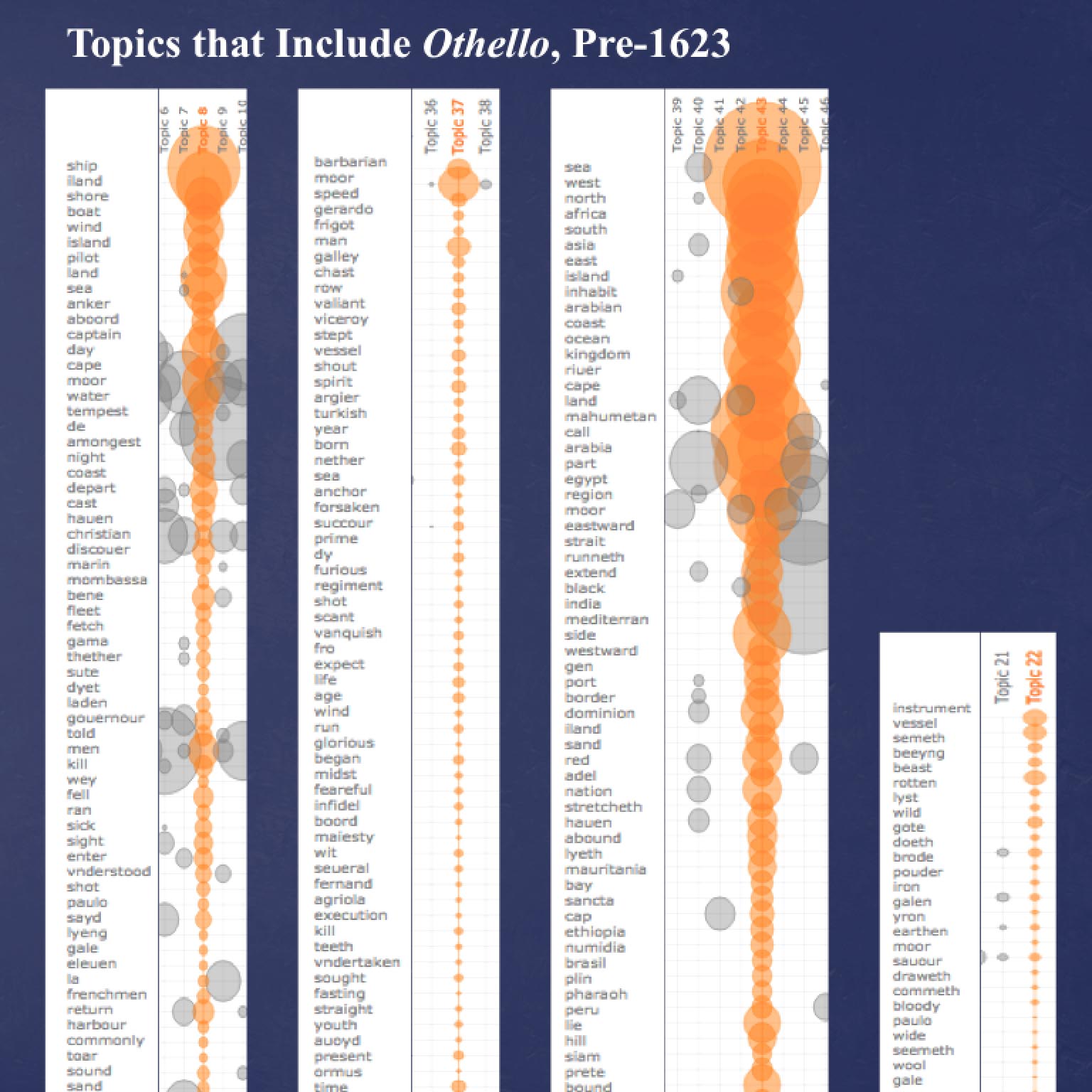Linked Reading: A New Scalable Model for the Digital Humanities

Scholars in the Digital Humanities have long grappled with questions of close and distant reading, or scalable reading, which involves a combination of the two. This project involves elements of close, distant, and scalable reading, but it adds a new dimension: that of linked reading, or the creation of new interpretive possibilities by the joining of humanistic datasets.
The Linked Reading project is a collaboration among Blaine Greteman (English, University of Iowa), James Lee (English, Grinnell College), and David Eichmann (School of Library and Information Science, University of Iowa). It builds on two earlier projects: Lee’s Global Renaissance, which includes full-text transcripts of 25,000 books drawn from the Early English Books Online / Text Creation partnership, and Greteman and Eichmann’s Shakeosphere, which gathers metadata about authors, publishers, booksellers, and printers for nearly half a million texts printed from 1473 to 1800.
The collaborative effort’s new website, Linked Reading: Big Data Histories, allows users to move between those datasets and to explore questions that involve the intersection between literary texts and their histories of printing and distribution. Further details on this collaboration, including its findings related to Shakespeare’s Othello are available in this report from the Obermann Center for Advanced Studies.
Blaine Greteman and James Lee were presenters at the 2015 Digital Bridges Summer Institute. Lee was a co-organizer of the 2016 Digital Bridges Summer Institute. This project, which involved collaboration with David Eichmann of the UI’s School of Library and Information Science, was supported by a Digital Bridges Summer Collaborative Grant as well as other awards that supported the work of Grinnell students Harry Baker, Ezra Edgerton, and Murielle O’Brien.
